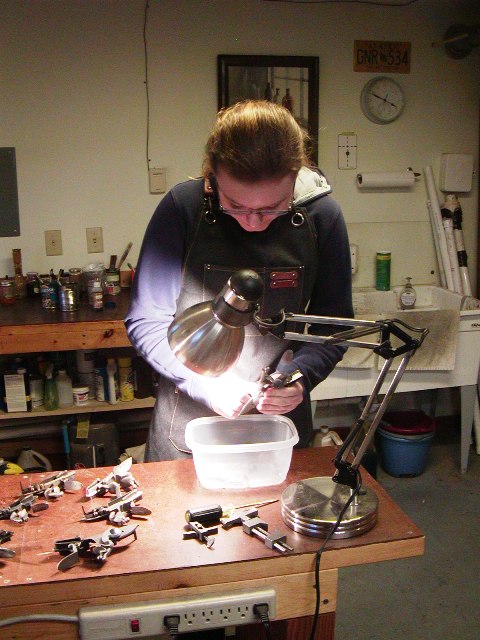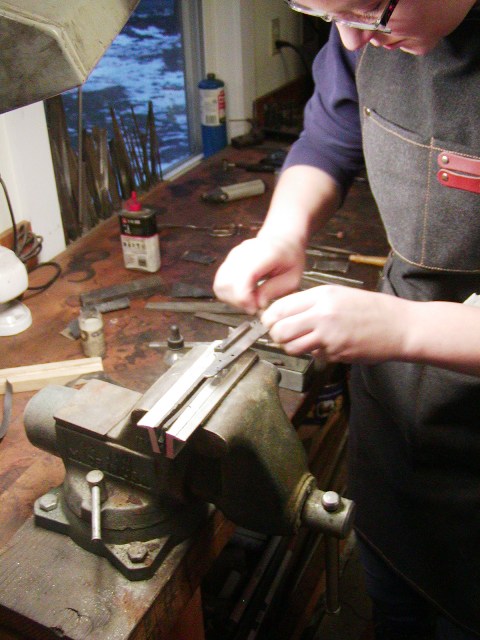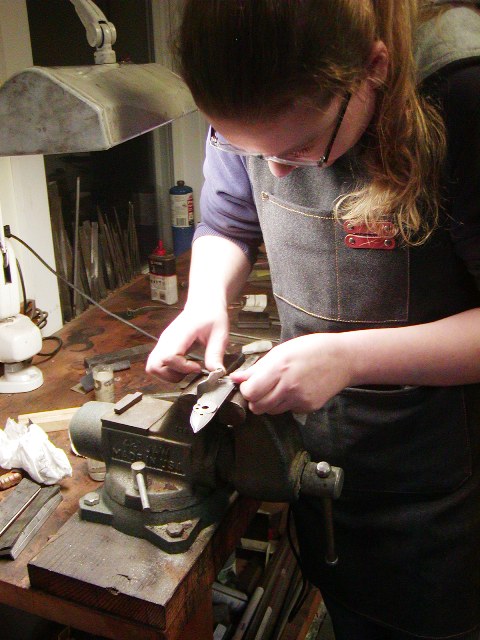- Joined
- Nov 26, 2005
- Messages
- 5,017
- Reaction score
- 9,964
Hi,
Another milestone day. The butt plate is in and we are starting to shape the butt stock. Maria finished inletting the butt plate. It came out very well considering she has never inlet a butt plate before. Let me be clear, I guide Maria, sometimes I step in and show her how to better use a tool or make a slight course correction. But then I get out of her way and go off and work on other guns. She does 99% of the work. Sometimes I watch her struggle with a task, I let her figure it out, and only step in when there is a really good teachable moment that enables her to make a big step forward. Then I leave her to it.
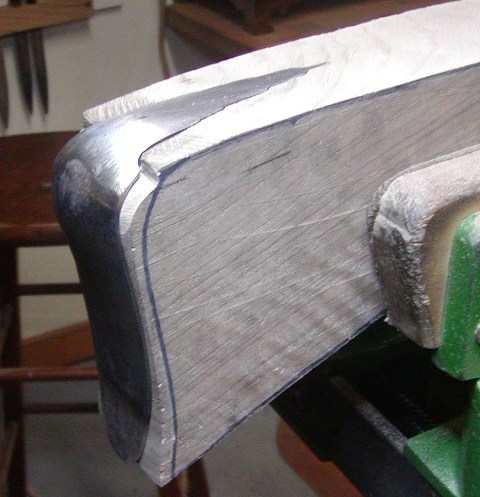
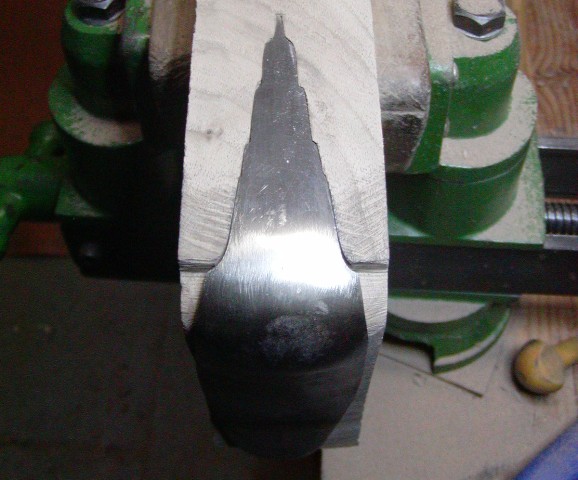
After inletting it, we drilled for the screw holes and installed the screws.
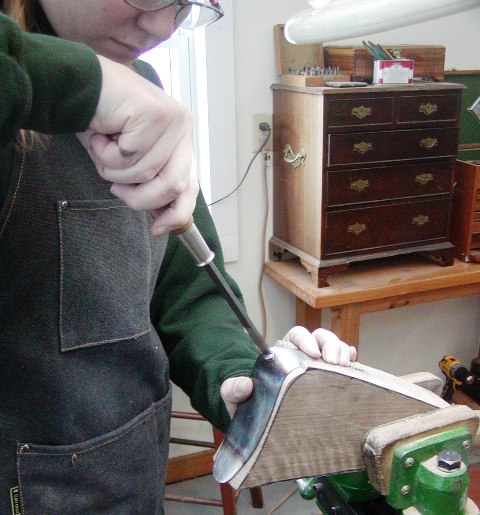
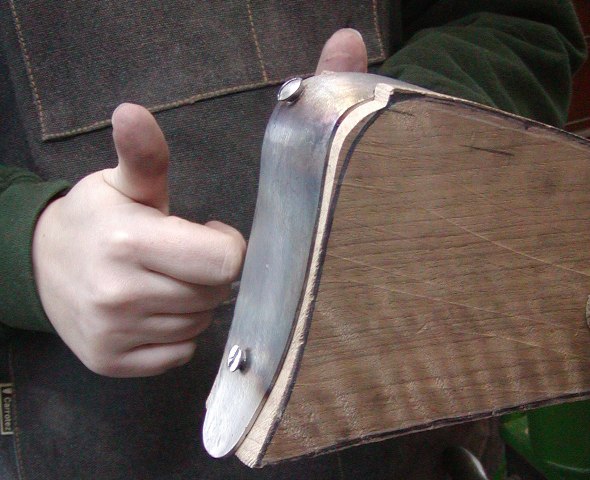
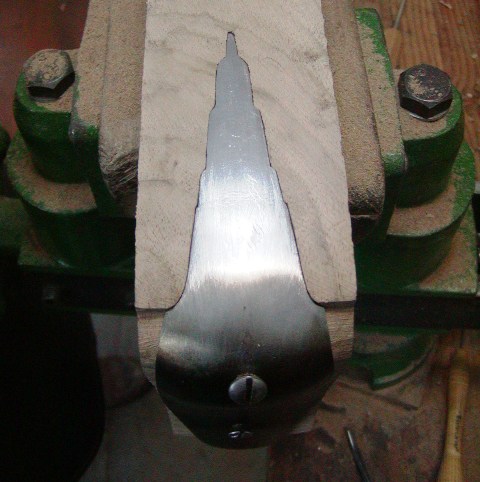
Not bad for a first butt plate inlet. Next up we began shaping the butt stock using shallow sweeps, gouges, and rasps. This fowler will have a baluster wrist merging with the comb in a radius rather than a seam or crease like a Brown Bess. First we draw a mark on the side at the comb very slightly above the top of the wrist. Then we make a mark on the stock about 1" above the toe of the stock at the butt plate. We draw a straight line through those marks. This is the initial guideline for the top of the baluster wrist. On top of the comb, we draw lines from the maximum width of the butt plate at the heel to the point of the comb. We initially make that point blunt and wider than it will ultimately be. Then Maria chiseled away the appropriate wood until most excess wood was removed.
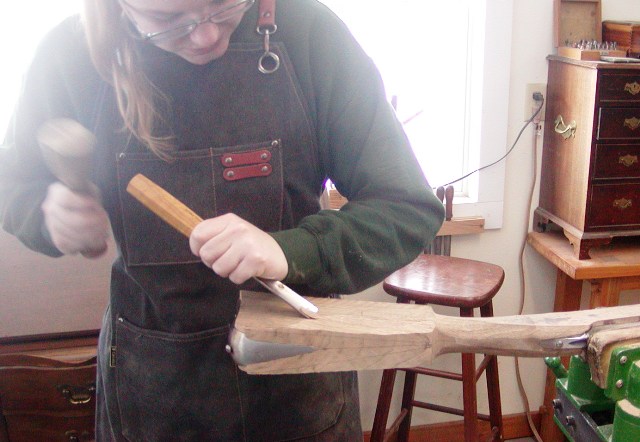
Then she smoothed the cuts using our Liogier gunsmith's rasp. This tool is superb and its long length allows you to reach the front of the comb without rapping your knuckles on the butt plate.
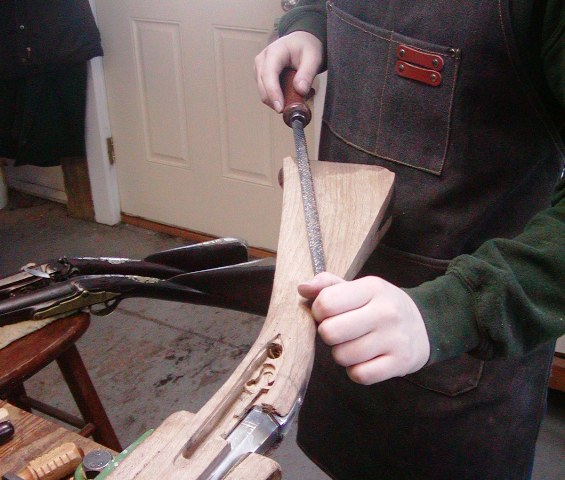
We do this in stages. I do not take anything down to a final profile all at once. We work down to that over time, always allowing some room for course corrections. I urge Maria to handle her gun at this point to see how it feels and gain insight about future shaping needs.
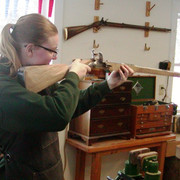
I think you can begin to see how elegant this fowler will ultimately be. We also drilled the stock for the forward lock bolt. Then use the side plate from Chambers English rifle kit to locate the rear lock plate bolt hol.

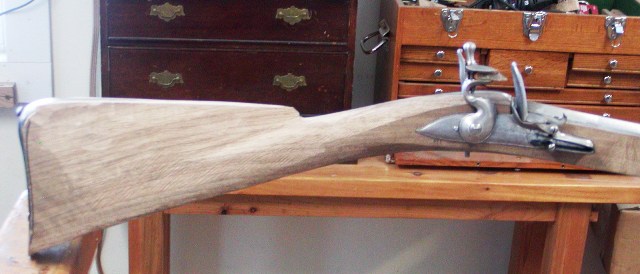
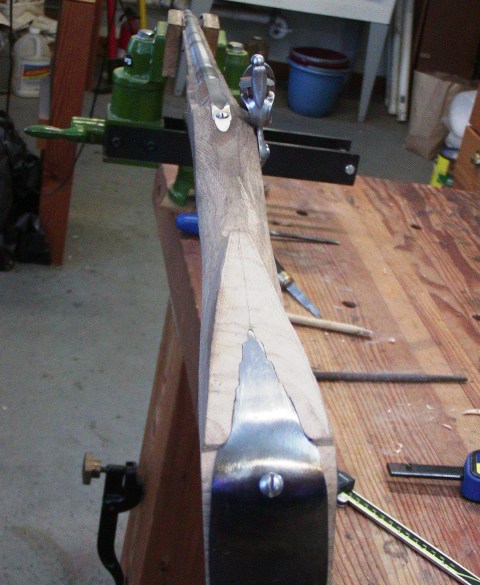
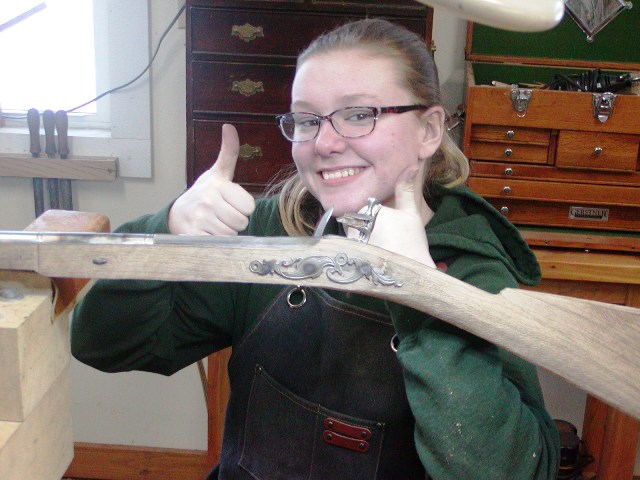
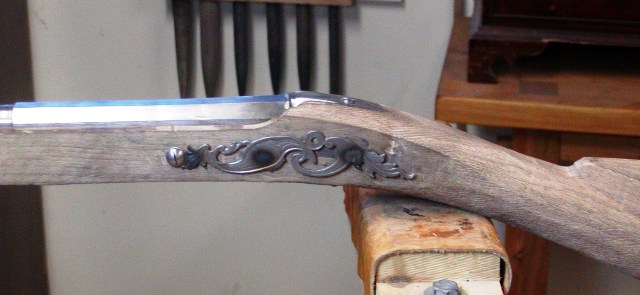
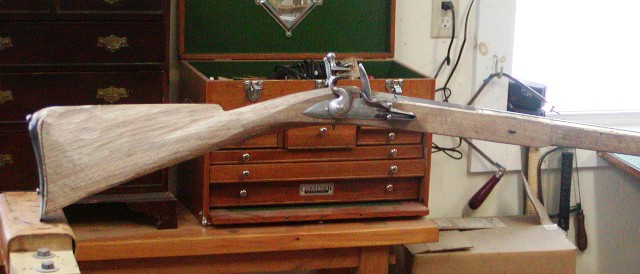
dave
Another milestone day. The butt plate is in and we are starting to shape the butt stock. Maria finished inletting the butt plate. It came out very well considering she has never inlet a butt plate before. Let me be clear, I guide Maria, sometimes I step in and show her how to better use a tool or make a slight course correction. But then I get out of her way and go off and work on other guns. She does 99% of the work. Sometimes I watch her struggle with a task, I let her figure it out, and only step in when there is a really good teachable moment that enables her to make a big step forward. Then I leave her to it.


After inletting it, we drilled for the screw holes and installed the screws.



Not bad for a first butt plate inlet. Next up we began shaping the butt stock using shallow sweeps, gouges, and rasps. This fowler will have a baluster wrist merging with the comb in a radius rather than a seam or crease like a Brown Bess. First we draw a mark on the side at the comb very slightly above the top of the wrist. Then we make a mark on the stock about 1" above the toe of the stock at the butt plate. We draw a straight line through those marks. This is the initial guideline for the top of the baluster wrist. On top of the comb, we draw lines from the maximum width of the butt plate at the heel to the point of the comb. We initially make that point blunt and wider than it will ultimately be. Then Maria chiseled away the appropriate wood until most excess wood was removed.

Then she smoothed the cuts using our Liogier gunsmith's rasp. This tool is superb and its long length allows you to reach the front of the comb without rapping your knuckles on the butt plate.

We do this in stages. I do not take anything down to a final profile all at once. We work down to that over time, always allowing some room for course corrections. I urge Maria to handle her gun at this point to see how it feels and gain insight about future shaping needs.

I think you can begin to see how elegant this fowler will ultimately be. We also drilled the stock for the forward lock bolt. Then use the side plate from Chambers English rifle kit to locate the rear lock plate bolt hol.






dave





